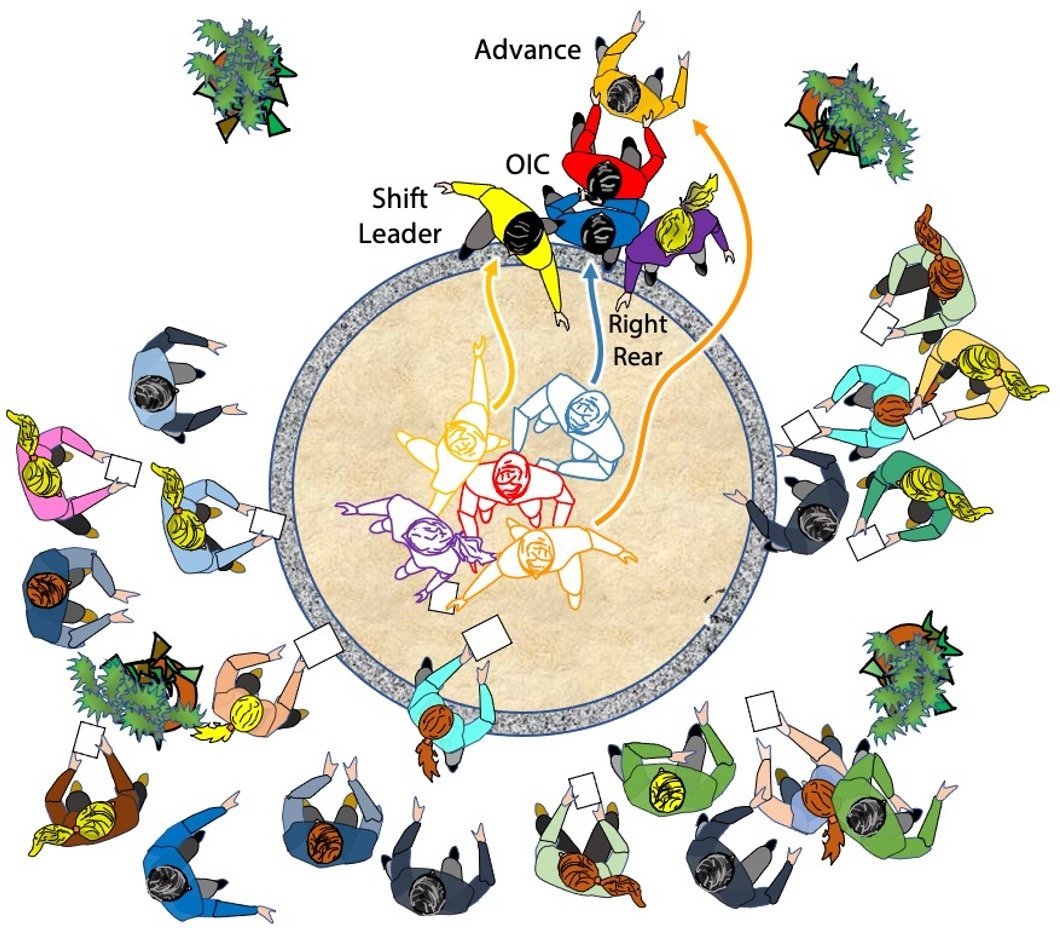Venue Close Protection: Large Crowd Attack Response
This article is adapted from our new Escort Detail Venue VIP Protection book. The article offers one technique for how a four-person detail might handle an unruly or violent crowd and evacuate the VIP to safety. We welcome your reactions, comments and ideas on our Facebook page and if you like the article, click below to check out the book on Amazon.
Venue Close Protection: Large Crowd Attack Response
When protecting the VIP from a large crowd, the detail must carefully monitor the mood of the crowd to anticipate problems or incidents before they occur. Crowds tend towards extreme behavior, whether positive or negative. This can become more problematic when many of the people in the crowd are intoxicated or even under the influence of narcotics. A single rowdy individual can also ignite the emotions of other bystanders. The detail must keep all of these factors in mind when monitoring the crowd.
If the crowd grows unruly for whatever reason, the detail might have a short time window to respond and get the VIP to safety. Hence, it is very important for the OIC to brief the VIP on unruly crowd evacuation procedures before arriving at a special event. As with other protection techniques, timing and correct intercept angle are critical for getting to the VIP in time to prevent unwanted physical contact with the crowd. Detail members can use any combination of VIP control techniques, empty-hand defensive tactics and protective rings discussed earlier in this book to keep the VIP separated from the crowd.
STEP 1: Monitor the Crowd
A four-person detail offers better protection and a number of different positioning options depending on the situation and environment. The Officer in Charge (OIC) will generally position behind the VIP while the Advance and Shift Leader (SL) will position on either side. The Right Rear (RR) can sometimes position further forward to monitor the crowd, or augment rear security with the OIC. The decision of where to deploy the RR will depend on the most likely threats. All detail members must adjust position to ensure they can reach the VIP in time and at the proper angle to intercept an attack. All detail members must continuously monitor the mood of the crowd during the speaking event, looking for any sign of a potential problem or incident.
STEP 2: Form a Protective Ring Around the VIP
As soon as any detail member identifies someone within the crowd who is starting to get unruly or begins to move towards the VIP’s extended security circle, all detail members will quickly move to the VIP and form a protective ring. Good timing and the proper intercept angle are essential to get to the VIP before an attack occurs.
STEP 3: Evacuate the VIP
Once the threat is taken care of and the VIP is shielded, the detail will quickly evacuate the VIP away from danger to the nearest safe haven. It is critical for the detail to break contact and not get decisively engaged with any of the attackers unless it is absolutely necessary. Ideally, the Advance will have identified and continued to monitor pre-planned escape routes to ensure a safe evacuation. The Advance will lead the VIP and detail to safety while the OIC controls the VIP. In most cases it will be helpful for the SL and RR to focus on rear security, preventing attackers from pursuing the detail.
We hope you found the short article useful and once again we welcome your reactions, comments or suggestions on our Facebook page where we frequently hold constructive discussions on tactics with people from various tactical backgrounds and experience levels. Also, click below if you would like to check out the full book on Amazon.




